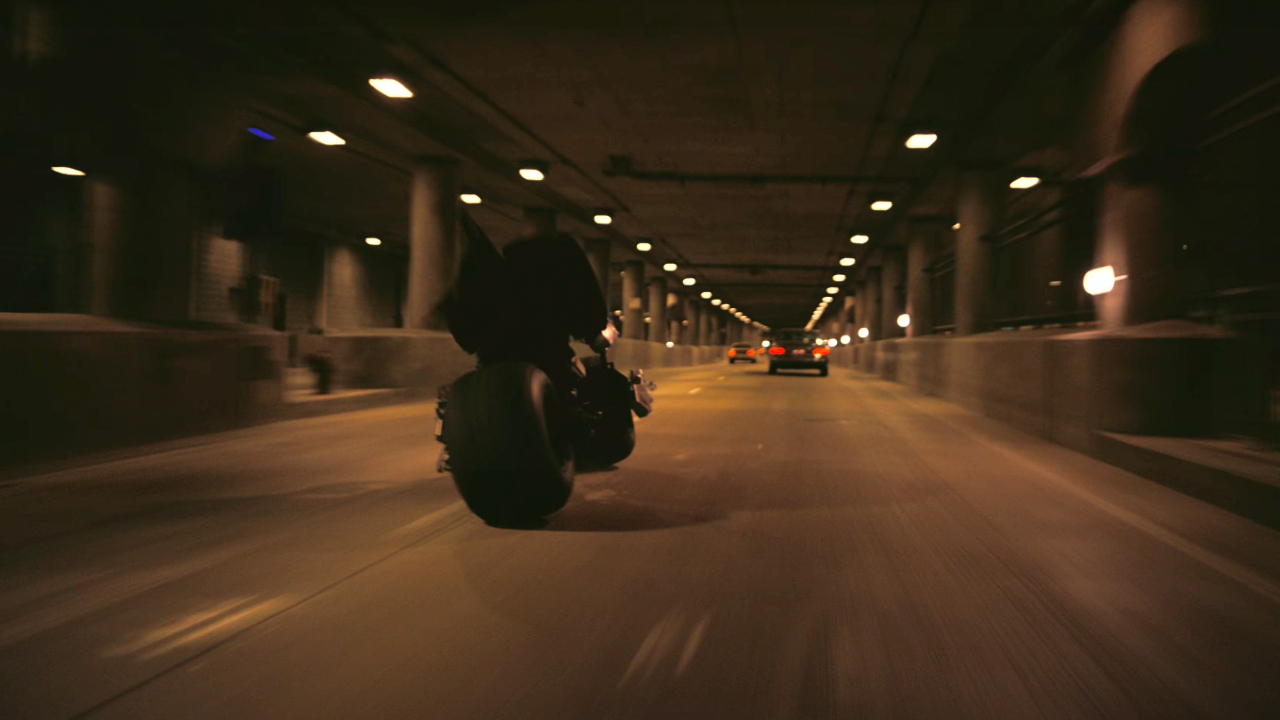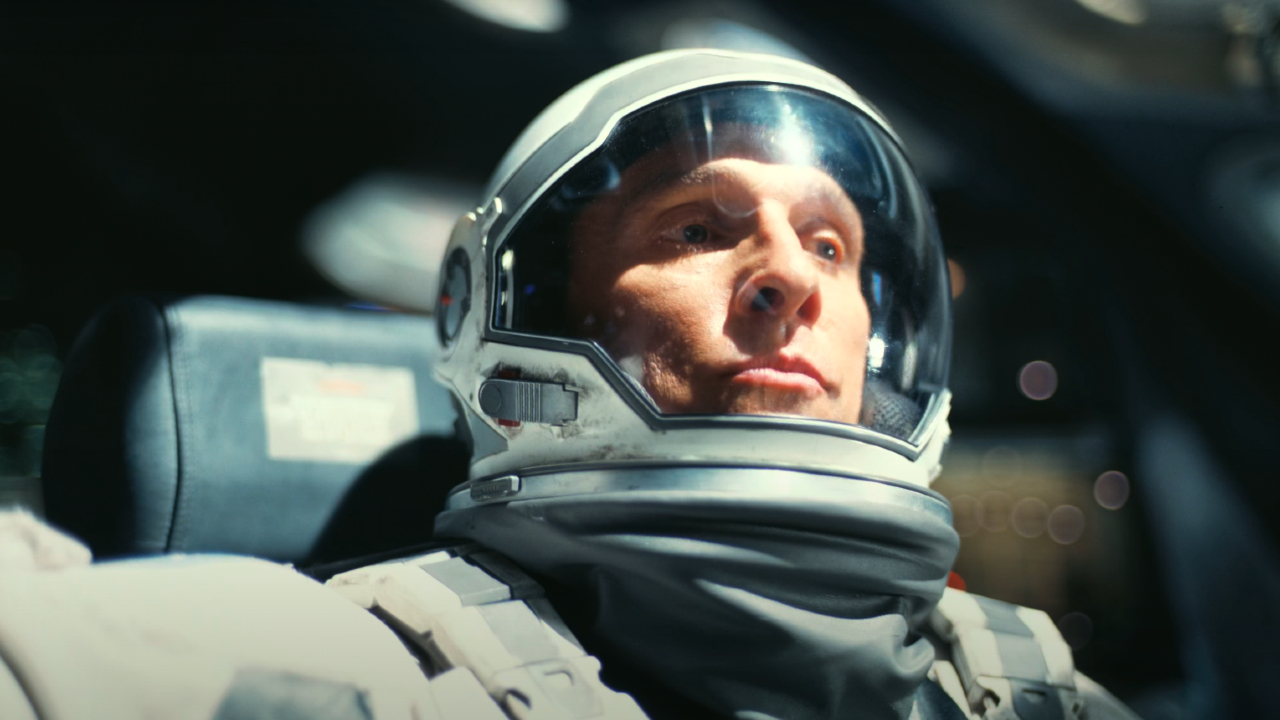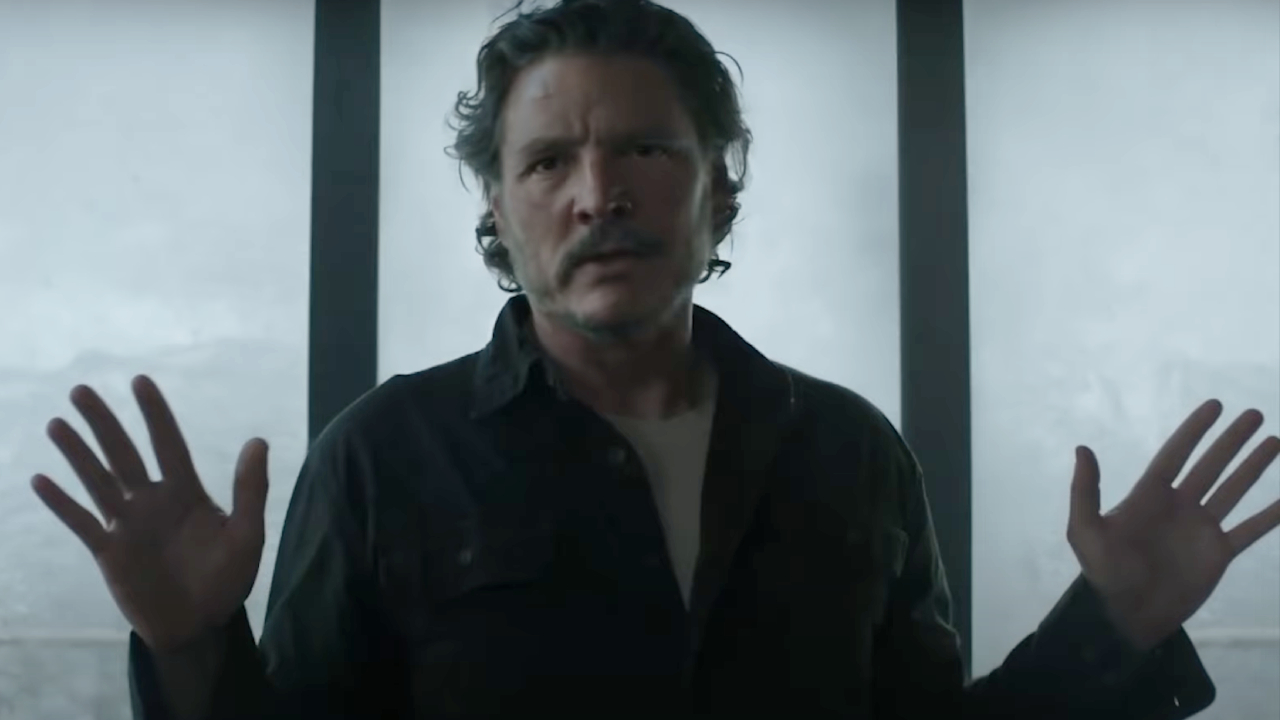The Most Christopher Nolan Scene In Every Christopher Nolan Movie
These Christopher Nolan scenes are simply the best.

Whether he’s playing with time, pulling off massive action set pieces, or surprising audiences with a sleight of hand, Christopher Nolan has long had a unique sense of style that gives his movies a distinct look and feel.
As part of our partnership with AMC Theatres, where you can now purchase tickets to see Oppenheimer presented in IMAX, we’ve gone through the visionary director’s movies and picked out a scene from each that we think best represents his style, themes, and plot devices. Deciding on just one moment from each film was no easy task, so please enjoy.

Following - Following The Man In The Suit
Christopher Nolan made his feature film debut with the 1999 black-and-white neo-noir crime drama, Following, a movie about a struggling writer (Jeremy Theobald) who follows people around London as he tries to come up with material for a book. Though the movie lacks the flash and stunning visuals seen in the director’s later work, this 70-minute thriller features one of his best opening scenes: following the man in the suit (Alex Haw).
This sequence introduces several of the trademarks Nolan would use in subsequent movies, like the quick cutting between multiple scenes, expository voiceovers playing over the action, and layer of mystery that baits and hooks the audience.

Memento - The Polaroid In Reverse
In 2000, Christopher Nolan came out with Memento, a film starring Guy Pearce as a man with short-term memory loss and the inability to create new memories, leading to him tattooing himself and taking polaroids.
The scene that sticks out the most is the opening title sequence with the polaroid of a dead body being shown in reverse. Not only does it tell the audience that violence awaits, it also introduces the director’s trademark of tinkering with time, which would show up time and time again.

Insomnia - Sting Operation In The Fog
Christopher Nolan further developed his visual style in the 2002 psychological thriller, Insomnia, a disorienting film about LAPD detective Will Dormer (Al Pacino) as he travels to a remote fishing village in Alaska to assist with the investigation into the murder of a teenage girl who is believed to be the latest victim of an alleged serial killer (Robin Williams).
CINEMABLEND NEWSLETTER
Your Daily Blend of Entertainment News
The entire movie has this feeling of being lost in confusion, and the scene that best represents this is the sting operation part way through the movie where Dormer attempts to lure the killer to the scene of the crime only for a wall of fog to make a mess of things. Not only is it visually stunning, it also creates this terrifying scene that messes with all your senses.

Batman Begins - The Tumbler Pursuit
Christopher Nolan has become one of the most creative directors when it comes to action set pieces over the years, and one of the best examples of this is the Tumbler chase sequence in Batman Begins.
After Rachel Dawes (Katie Holmes) is sprayed by Scarecrow’s (Cillian Murphy) fear toxin and goes into shock, Batman (Christian Bale) is in a race against time to save the woman he loves. And while this proves to be no easy task for the Dark Knight, considering all the police in between him and the Bat Cave, it leads to one of the most iconic action sequences of Nolan’s career, and 21st-century cinema.

The Prestige - The Reveal
Between his first and second Batman movies, Christopher Nolan released The Prestige, a movie about two rival Victorian era magicians who will stop at nothing to woo audiences and best the competition. In the final moments of the movie, both Alfred Borden (Christian Bale) and Robert Angier (Hugh Jackman) reveal how they pulled off the “Transported Man” act in equally impressive yet unsettling ways.
We’ll avoid spoiling the ending for those who have yet to watch the movie, but the scene features one of the best peeks behind the curtain you’ll see in any of Nolan’s works.

The Dark Knight - Batman Racing To The Wrong Location
Coming up with the “most Christopher Nolan scenes” in The Dark Knight was harder than every other movie on this list simply because the director’s 2008 Batman movie is bursting at the seams with iconic moments like the opening bank robbery, the Hong Kong extraction, Jim Gordon’s funeral, etc., etc.
But the one that captures the essence of a Nolan film better than the rest is the sequence in which Batman races to save Rachel Dawes (Maggie Gyllenhaal), only to show up at the wrong location. It plays with action, time, and drama, while also leads to the creation of Two-Face after Harvey Dent (Aaron Eckhart) is burned in the explosion.

Inception - The Hallway Fight
Inception, Christopher Nolan’s mind-bending heist film about a thief (Leonardo DiCaprio) who breaks into people’s dreams to steal information remains one of the director’s best films, thanks in part to all those iconic sequences.
The scene that best represents Nolan’s visual creativity is the one in which Arthur (Joseph Gordon-Levitt) fights through a hallway in one layer of a dream as it is being subjected to the gravity of the first layer. It plays with time, cause and effect, and action, all staples of Nolan’s work.

The Dark Knight Rises - Destruction At Gotham City Stadium
The Dark Knight Rises is another movie that could have had multiple examples, but none are as epic and memorable as Bane’s (Tom Hardy) destruction of Gotham City Stadium at the start of his occupation of the city.
The sheer size and spectacle of the exploding and collapsing football field during opening kickoff combined with the simultaneous destruction of all but one of the bridges and tunnels leading to Goham kicks off the second half of the 2012 movie in a startling way.

Interstellar - Venturing Into The Black Hole
Interstellar is a movie about science, human emotion, and determination to save the ones we love, no matter what it takes or how many years we spend accomplishing our goals. Christopher Nolan best illustrates this in the scene in which Cooper (Matthew McConaughey) slingshots himself into the Gargantua black hole so that Brand (Anne Hathaway) can reach the inhabitable Edmunds’ planet.
The act of self-sacrifice, the stunning visuals of a black hole unlike anything anyone has seen, and the epic swelling of Hans Zimmer’s score create a dizzying and emotionally-charged sequence of events that lead to the biggest reveal of the movie.

Dunkirk - The Ending Sequence
One thing that Christopher Nolan has done over the years is end his movies as another chapter begins. He did it with The Dark Knight Rises and Interstellar, and again in his 2017 World War II epic, Dunkirk.
This ending sequence shows the conclusion of all three major storylines and timelines while also leaving the audience guessing the next steps, both on the micro level with Tom Hardy’s stranded pilot and the macro with the continuation of the Second World War. It messes with our emotions and also leaves us wanting more, which is honestly the best way to end a movie.

Tenet - The Protagonist Fights Himself
There probably isn’t another Christopher Nolan movie that plays around with the concept of time more than Tenet, the director’s 2020 sci-fi action thriller starring John David Washington as a character simply known as The Protagonist. At one point in the movie, the future version of the character goes back to an earlier scene and is encountered by his past self, leading to an epic and creative showdown.
Admittedly, there are parts of the movie that feel like a puzzle that require additional viewings to figure out, but this scene is one of those all-time great Nolan moments that is just so much fun to revisit.
We can’t wait to see what Christopher Nolan has up his sleeve with Oppenheimer, but if it’s anything like previous efforts, it’s going to be one unforgettable experience. If you’re just as stoked for what’s to come, you’ll probably want to go ahead and purchase your tickets before Oppenheimer arrives in theaters on July 21st.

Philip grew up in Louisiana (not New Orleans) before moving to St. Louis after graduating from Louisiana State University-Shreveport. When he's not writing about movies or television, Philip can be found being chased by his three kids, telling his dogs to stop barking at the mailman, or chatting about professional wrestling to his wife. Writing gigs with school newspapers, multiple daily newspapers, and other varied job experiences led him to this point where he actually gets to write about movies, shows, wrestling, and documentaries (which is a huge win in his eyes). If the stars properly align, he will talk about For Love Of The Game being the best baseball movie of all time.










